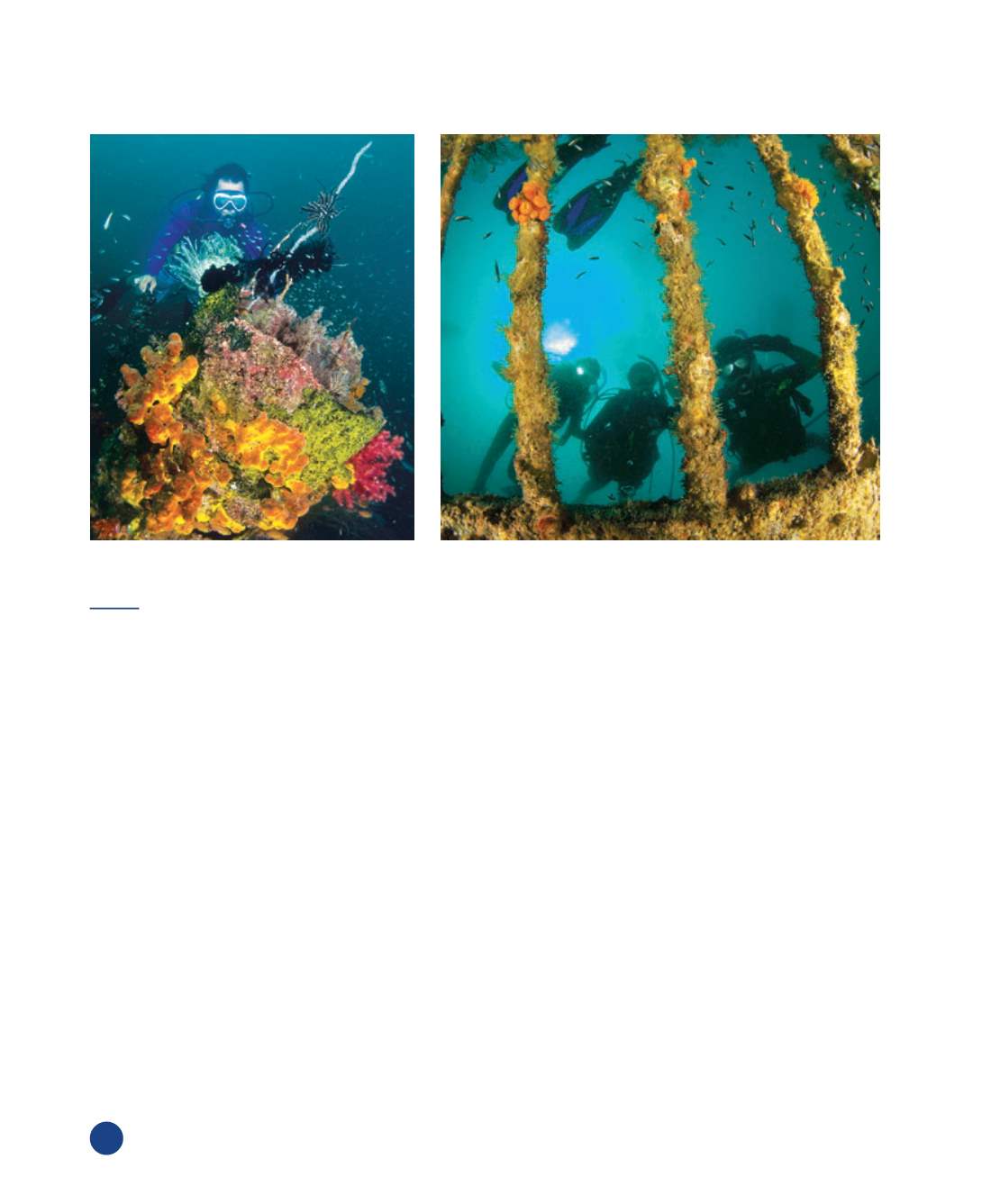

226
Borneo Bulletin Yearbook 2020
DIVING
Brunei has slowly grown to be the go-to diving
destination. Its budding diving scene is fairly
new, with the first diving company starting
operations within the past decade. While the
diving scene has garnered growing numbers of
local and international divers, these dive spots
are a great option for those who wish to beat the
crowds in other diving hotspots.
Brunei’s waters are located in the outskirts of
the Coral Triangle, hosting 4,500 hectares of
untouched coral reef. Deep beneath the waters are
shipwrecks, some from World War II, as well as
sunken oil rigs. Some wrecks are only accessible
for technical divers due to their depths, rendering
them unsuitable as recreational diving spots.
Brunei’s dry season is between March and
October, when diving is highly recommended.
During these months, the sea is calm and divers
are likely to encounter deeper underwater
visibility. Brunei’s water averages 25-28
degrees Celsius, a warm tropical temperature
ideal for diving. These conditions coupled with
exotic marine life in vast quantities are perfect
for macro photography, attracting underwater
photographers. Examples of these marine lives
include the largest species of nudibranch, leopard
shrimps, lionfish and some of the world’s largest
concentrations of allied cowries.
Two of the most prominent diving operators in the
Sultanate are Oceanic Quest and Poni Divers. Both
are situated in the Brunei-Muara District around
the Serasa area. Founded in 2010, the Oceanic
Quest is the first company in Brunei dedicated
specifically to diving, staffed with experienced
divemasters. Meanwhile, on top of diving, Poni
Divers also conducts other watersport activities
such as wakeboarding, banana boat rides and jet
skiing. In 2017, both companies were tapped by the
TourismDevelopment Board for a joint collaboration
to further promote Brunei’s diving scene.
DIVE SITES
Australian Wreck
One of the Sultanate’s most well-known diving
sites is the Australian wreck. It lies on its port side
at a 50-degree angle and is slowly collapsing into
the sand at 35 metres under the sea. Originally
a Dutch passenger/cargo steamer called the S.S.
De Clerk, the Australian Wreck was thought to be
an Australian ship or a Japanese ship sunk by an
Australian torpedo, hence the origin of its name.
However, it was later proven that both theories
were incorrect. In 1942, it was converted into a
troop carrier during World War II. On September
16, 1944, while carrying 1,210 personnel from the
Philippines to Singapore, the ship – renamed the
Imbari Maru by the Japanese – struck a Japanese
mine and sank. The incident claimed 339 lives.
Tales of the 339 lives haunting the wreck are well
known, though divers are encouraged to simply
enjoy the marine life lingering around the wreck.









